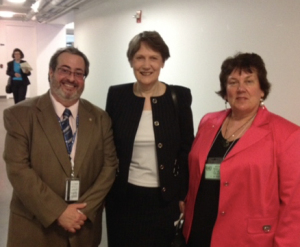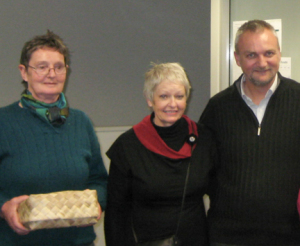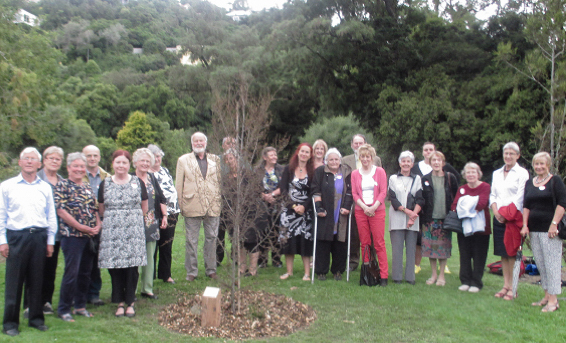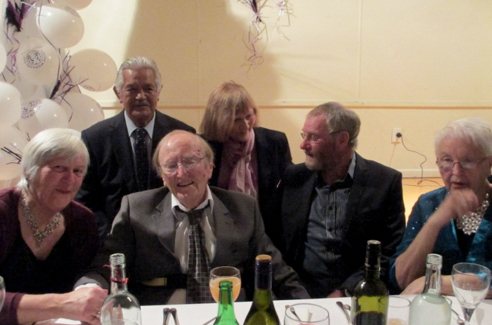Reflections on the fifth decade by Mary Nash
This last decade is so close to home that, apart from particularly obvious matters, it has been a little difficult trying to pick out what later social workers will regard as important and direction changing. As with the previous decade, I have been greatly helped through the assistance of fellow members of the Association.
In the international scene, the International Federation of Social Workers celebrated 30 years of the IFSW Social Work Day in the United Nations.

This initiative established globally a permanent World Social Work Day. In 2009, the IFSW theme for Social Work Day linked social work to social development with three hopeful statements:
- Together we build the agenda
- Together we face the challenges
- Together we thrive
Dr. Rory Truell was appointed as Secretary General of IFSW in 2011, and in 2014 Fiona Robertson was presented with the highest IFSW honour the Andrew Mouravieff-Apostol medal in recognition of 14 years dedicated work for IFSW.

In 2014 the following Global Definition of Social Work was approved by the IFSW General Meeting and the IASSW General Assembly in July 2014:
Social work is a practice-based profession and an academic discipline that promotes social change and development, social cohesion, and the empowerment and liberation of people. Principles of social justice, human rights, collective responsibility and respect for diversities are central to social work. Underpinned by theories of social work, social sciences, humanities and indigenous knowledge, social work engages people and structures to address life challenges and enhance wellbeing.
The above definition may be amplified at national and/or regional levels. Regional branches of IFSW and IASSW will now be working on developing specific amplifications and it is likely that the same will be done for Aotearoa New Zealand in due course.
Closer to home, during this decade, several matters will stand out as historically significant and are to be put on record:
- The role of the new Social Work Registration Board (SWRB) and the relationship between the ANZASW and the SWRB
- Competency certification and related matters
- Our new constitution and the introduction of the Governance Board
- Tangata Whenua Social Workers Association
- Continuing Professional Development.
The Social Work Registration Board has established a clear registration process and keeps people informed and updated through its website. This was not always a straightforward process. Members of the Association may read different perspectives on the matter in articles published in issues of Social Work Review. There is also a useful article by key players in this history (Beddoe & Duke, 2009).
Both the ANZASW competency recertification and the Registration Board Annual Practicing Certificate require competent and registered social workers to show how they maintain their professional knowledge and skills. Mark Henrickson and Liz Beddoe encouraged the Association to take a major role in Continuing Professional Development (CPD) through brokering, direct provisions and lobbying employers, and the government for more resources. The webinar sessions we can now access bear witness to the Associations success in this area.
The establishment of the Association’s Course Approvals Board stands out as a significant (albeit short lived) part of our history, and the Board carried out three approvals between 2003 and 2006, which were the University of Otago, Unitec and the University of Auckland. In the end, this programme was discontinued. The Social Work Registration Board now has responsibility for recognition of social work qualifications in Aotearoa New Zealand.
In 2007, the ANZASW changed its constitution and moved away from a National Executive and Council to a Governance Board and a Chief Executive. It was centralised in Christchurch. At the Special General Meeting in June 2007 a new Constitution was adopted that provided for a new Governance structure for ANZASW. The National Executive was appointed as the new Governance Board until elections could be held at the November Annual General Meeting. The Board was also given the task of managing the transition to the new governance structure, including reviewing the Standing Committee structure and organising the transition to a new complaints resolution process.
In 2009, the Tangata Whenua Social Workers Association was formed:
About 100 of the country’s 1000 Tangata Whenua social workers gathered at Pukaki Marae in Mangere to launch Tangata Whenua Social Workers Association. According to Kaumatua Taotahi Pihama, the group will support Maori working for mainstream and iwi providers, and help train new kaimahi to operate effectively with Maori whanau. It will build on work done by previous generations since the first Maori graduate social worker, John Rangihau, in the 1950s. (Waatea News, Nov 20, 2009)
Social work practice is always influenced by the social, political, cultural and economic contexts in which it takes place. In 2010, the Ministry of Social Development, the Ministry of Health and Te Puni Kōkiri launched the Whānau Ora initiative in 2010, in response to the report of the Taskforce on Whānau-Centred Initiatives (2010). The taskforce report stated clearly that “Te Tiriti o Waitangi, remains a key instrument to guide national development. It affirms the unique status of Māori as tangata whenua, the indigenous population, while simultaneously conferring, through government, the rights of citizenship upon all New Zealanders”. (p. 6)
Like the Strengthening Families initiative, Whānau Ora was designed to facilitate the coordination of government agencies to support whānau. It is based on Māori processes and values and is relevant to the many and varied forms of contemporary Māori familial relationships.
In 2011, as part of a five-yearly review of the Act, the Social Workers Registration Board (the Board) released a discussion paper on Mandatory Social Worker Registration to find out the views of New Zealanders on whether it is time to make registration mandatory for all social workers. Feedback from this process was a clear “Yes” and the SWRB recommended to the Minister for Social Development and Employment that registration of all social workers should be mandatory. The recommendation was not successful.
In 2013, the Aotearoa New Zealand Social Worker: Social Work Review published its themed issue recognizing the first ten years of Social Work Registration. See Social Work Review, 2013, 25 (3). In his editorial, Kieran O’Donoghue quotes a famous song by Tracey Chapman, putting his question to the Minister of Social Development regarding mandatory registration and a Treaty-based system which is “If not now, then when?” This issue of the Association’s journal touches on sensitive areas which have affected the relationship between the ANZASW and the SWRB. One of the first things I was taught as a student social worker holds good in this matter, namely that there are always two sides to a story. Also in 2013, the SWRB held a Conference: Protecting the Public – Enhancing the Profession. For more information on this readers can refer to the: Edited proceedings from the Social Workers Registration Board Conference 2013. The conference proceedings, edited by Jan Duke, Mark Henrickson and Liz Beddoe, (July 2014) make interesting reading.
The Association continues to make submissions on important matters relating to social work and social policy. A record of these can be found on our ANZASW website. The ANZASW Board decided to provide coverage for social service workers. The Board has taken the inclusive view that those who are not qualified social workers, and/or will not be eligible for registration, should be supported as a distinct group of social service worker members within ANZASW. As this goes out to members, an ongoing and passionate debate has been taking place, on whether we should expand our membership and if so to what groups. There is much concern over the competing values of inclusivity and professionalism. Only history can tell us what will be the eventual outcome.

On Friday 21st February 2014 the Otago branch celebrated the 50th anniversary of the Association with the planting of a kahikatea in the Woodhaugh Gardens. This was particularly significant for local members as the ANZASW was founded in Dunedin in 1964. The ceremony concluded with nibbles and a chance to socialise with old friends and followed in the evening with a dinner.

The Manawatu Whanganui Branch and Manawhenua roopu of the Aotearoa New Zealand Association of Social Workers recently gathered together to celebrate the Association’s Fiftieth anniversary with Merv Hancock, the founding president of the Association. The Branch hosted life members at a splendid dinner catered for by members of Luck Venue which is part of the MASH Trust. They ensured that we all enjoyed a great meal in comfort.
